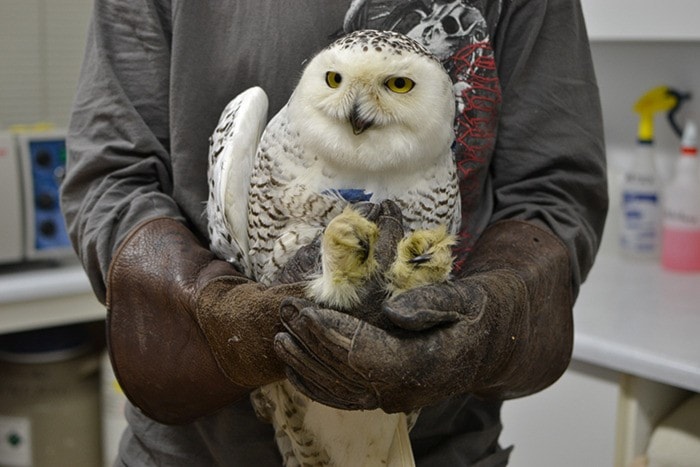Delta's foremost wildlife rescue agency for birds says the majestic snowy owls that have captivated the hearts of bird lovers are dying from starvation. And part of that is our fault.
"We've had calls from all over, we've had a few shipped in to us that haven't made it," says Bev Day, founding director of the Orphaned Wildlife Rehabilitation Society. "They're basically starving."
A large number of snowy owls migrated south to the Lower Mainland from the high Arctic for the second year in a row, and have been visible in large numbers in Boundary Bay at the base of 64th and 72nd streets.
But the birds don't appear to be doing very well. Day says rehabilitating the owls is "touch-and-go" and likened their condition to anorexia. When they come in they have to be fed frequently, but in small portions.
"What happens with a bird of prey is when they're starting to starve and not getting enough food, they actually are eating off their own bodies."
Day believes the birds arrived late in the season because of warm weather conditions in the Arctic and it has caused many to go hungry as a result.
Although food is more plentiful in Boundary Bay and surrounding areas, Day says it is human encroachment that is likely the cause of their continued deterioration.
"I know photography is a million, billion dollar industry, but you've got these people with these huge frikkin lenses—and I could say something else but I'll just say frikkin—and they try and get down on the foreshore and they're right in the birds' faces."
Day once saw a woman set her dog on an owl so she could get a picture of it in flight. Says she can't even go down to the dike because what she sees upsets her.
Not only does disturbing the owls cause them to lose energy and heat, Day says it encroaches on time they should be spending hunting mice.
But Day says the birds have likely moved on from southern B.C. into the northern regions of the U.S., as far south as California.
"Last week at one point there were 30 snowys counted. Two days later there was only five on the shore."
O.W.L. currently has one snowy in captivity that was hit by a car. They are treating the injuries and hope to rehabilitate the bird for rerelease into the wild, as they do for hundreds of birds every year.
The shelter has a record 470 birds in care at present, and the condition of other raptors are markedly similar to the snowy owls.
Donations can be made to O.W.L. for the care and rehabilitation of wildlife. For more information, visit owlcanada.ca.
